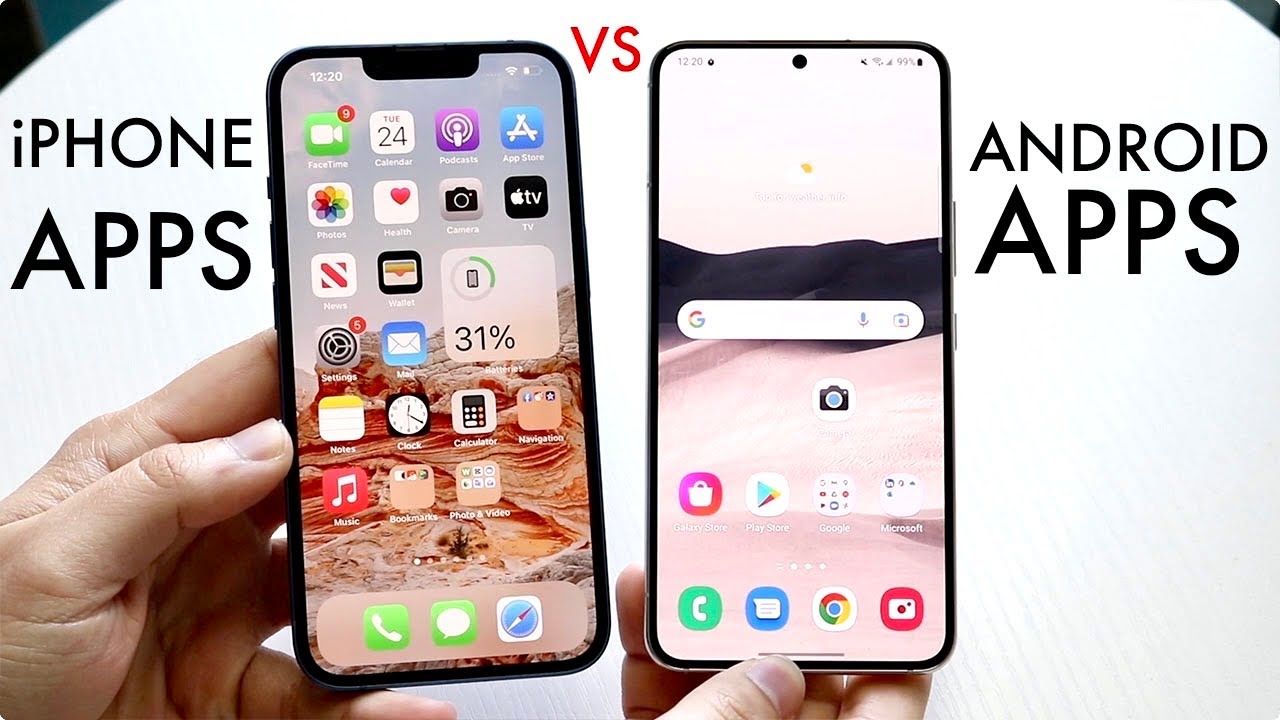Android App vs. iOS App: Unveiling the Distinctions and Making Informed Choices

start-your-gig-economy-business-with-our-fiverr-clone-solution
In the dynamic realm of mobile app development, the eternal debate between Android and iOS platforms continues to captivate developers, businesses, and users alike. Each platform boasts a legion of devoted followers, distinct design principles, and unique development processes. In this blog, we delve into the key differences between Android and iOS apps, shedding light on the nuances that can influence your choice and ultimately shape your app’s success.
Design Philosophies and User Experience
At the core of the Android vs. iOS discussion lies their contrasting design philosophies. Android’s open-source nature allows for greater customization and flexibility, enabling developers to craft visually distinct and feature-rich applications. On the other hand, iOS adheres to Apple’s stringent design guidelines, emphasizing sleek aesthetics and a seamless user experience.
iOS apps often feature a consistent look and feel, fostering user familiarity across various applications. This cohesiveness can lead to smoother user interactions and quicker learning curves. Android’s design, while more diverse, can result in a wider array of app appearances, catering to individual preferences but potentially sacrificing uniformity.
Development Environment and Tools
When it comes to creating apps, the development environment plays a pivotal role. Android Studio serves as the official Integrated Development Environment (IDE) for Android apps, offering robust tools and a user-friendly interface. Its compatibility with various programming languages, including Java and Kotlin, gives developers the freedom to choose their preferred coding language.
iOS development, on the other hand, centers around Xcode – Apple’s exclusive IDE. Swift, Apple’s modern programming language, has gained popularity among developers for its speed and efficiency. While iOS development may initially require a steeper learning curve, the consistency of the development environment contributes to more streamlined processes once mastered.
Also Read: start-your-gig-economy-business-with-our-fiverr-clone-solution
Fragmentation vs. Standardization
One of the most notable distinctions between Android and iOS is device fragmentation. Android’s open nature has led to a vast array of devices, each with different screen sizes, resolutions, and hardware capabilities. While this diversity offers a larger user base, it can pose challenges in ensuring consistent user experiences across various devices.
In contrast, iOS maintains a higher degree of standardization due to Apple’s tight control over its hardware and software ecosystem. This standardization simplifies testing and quality assurance, making it easier for developers to optimize their apps for specific iOS devices.
App Distribution and Monetization
The app distribution and monetization models also differ between the two platforms. Android apps are primarily distributed through the Google Play Store, which offers a more lenient approval process. This ease of entry provides developers with a wider reach, but it can also lead to concerns about app quality and security.
iOS apps, distributed through the Apple App Store, undergo a stringent review process to ensure a higher level of quality and security. While this can result in a longer approval timeline, it instills greater confidence among users about the apps they download. Additionally, iOS users are generally more willing to spend on in-app purchases and premium apps, potentially yielding higher revenue for developers.
Market Share and Demographics
When deciding between Android and iOS development to create an app for Android, considering market share and user demographics becomes essential. Android boasts a larger global market share, making it an attractive choice, especially in emerging markets where affordability is a crucial factor for a broader target audience.
iOS, on the other hand, tends to attract a more affluent user base, making it an ideal choice for apps targeting premium or niche markets. The iOS user demographic often demonstrates higher engagement rates and willingness to spend on apps and services.
Conclusion: The Right Fit for Your Vision
In the Android vs. iOS debate, there is no definitive answer. The choice between the two platforms ultimately hinges on your app’s purpose, target audience, and your development team’s expertise. Android offers customization and a larger user base, while iOS provides a refined user experience and a more standardized development environment.
Regardless of your decision, understanding the nuances of each platform empowers you to make informed choices, ensuring that your app not only thrives in its chosen ecosystem but also captivates users with an exceptional experience. By carefully considering the design principles, development tools, user demographics, and monetization strategies, you can navigate the Android vs. iOS landscape and set your app on a path to success.








